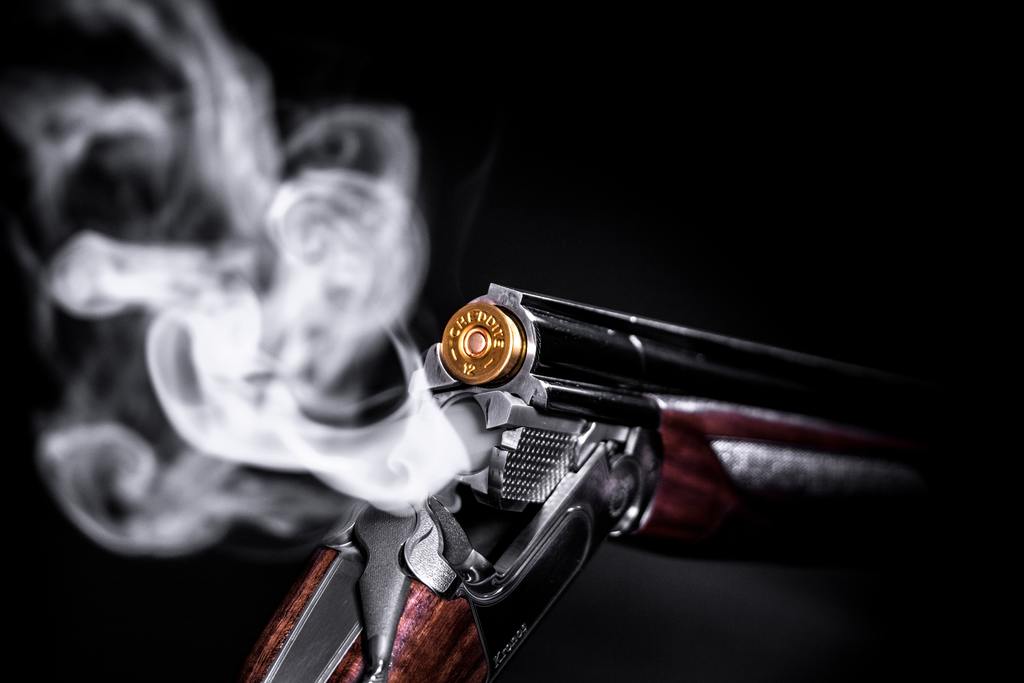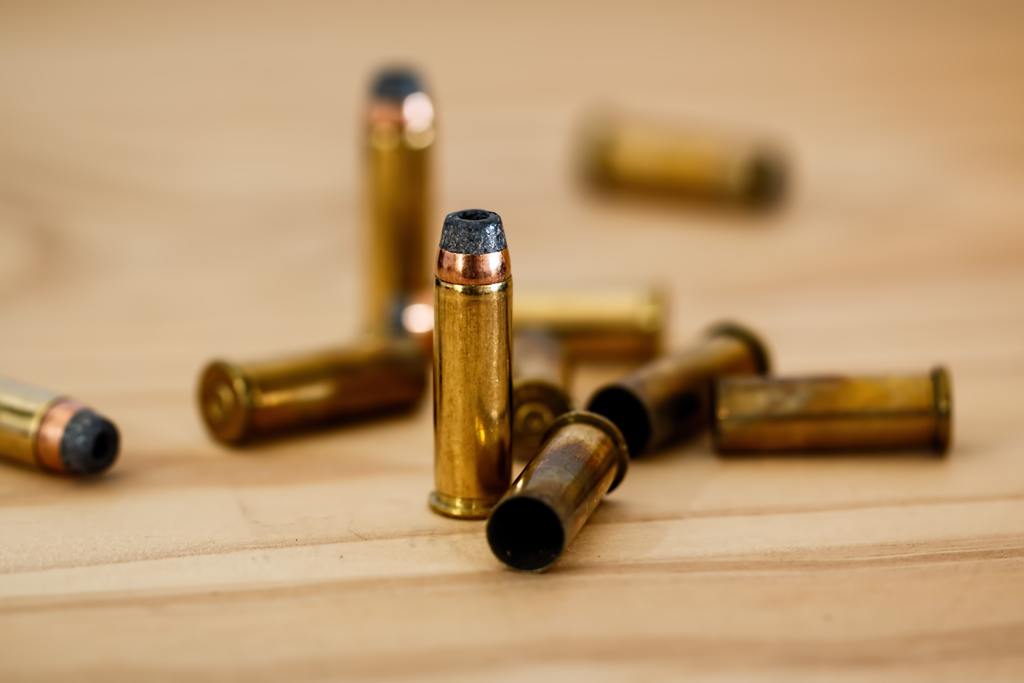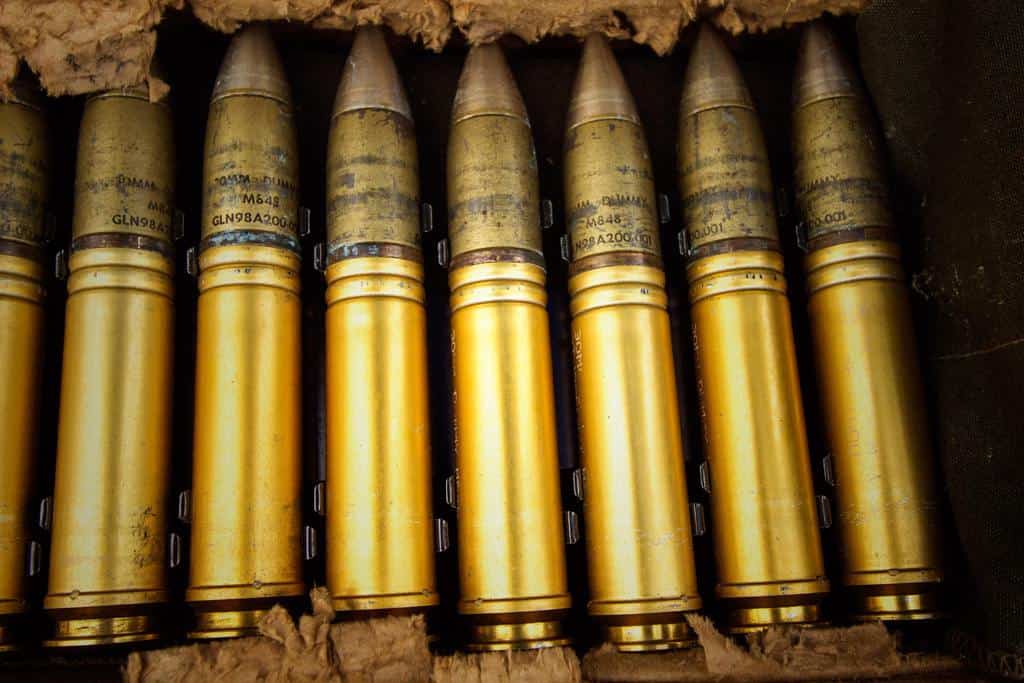As an Amazon Associate we earn from qualifying purchases.
Understanding ammunition and how it works is essential to a safe and productive shooting experience. To make sure you can choose the correct ammo for your firearm and your specific needs, it’s good to outline basic components of ammunition before going to the gun store. So, what are the basic components of ammunition?
Contents
What Are the Basic Parts of Ammunition?
For a gun to fire, 4 basic components of ammunition must be present:
- Projectile (bullet)
- Source of energy to launch the projectile (gunpowder)
- Constriction to contain the energy and guide the projectile (barrel)
- Way to ignite the energy source or explosive chemical compound (primer)
Ammunition typically constitutes numbers 1,2 and 4 of these basic components of ammunition, which are contained in the barrel when firing.
Fixed Ammunition
For centuries, early firearms used what I referred to as fixed ammunition. This means the basic components of ammunition were loaded individually to the gun by a reloading press and were contained by it. If you’re looking for a press to reload your ammo, read my detailed reviews of reloading presses on the market.
For instance, a handgun barrel would be loaded with a charge of gunpowder. Next, the projectile would be loaded into the handgun barrel. Finally, a priming source (usually a fine powder that burns rapidly) would be loaded.

Ignition sources ranged from simple burning pieces of string to complex, clock-like mechanisms that spun a striker piece against a piece of flint to create a spark.
Fixed ammunition is slow and difficult to load, easily affected by environmental conditions, and has severe restraints on ammunition components and the amount of power that can be created.
The Invention of the Ammunition Cartridge
Naturally, a better method of loading ammunition was desired. Some guns started to use a paper patch to hold the powder and bullet while the explosive chemical compound was loaded separately. This was an improvement in loading capabilities and ammunition components, but ultimately only a stepping stone.
Finally, the cartridge was invented. The cartridge held all of the separate ammunition components together in one piece. This protected the sensitive chemical components from outside effects and also made it possible to load and fire the gun as fast as a new cartridge could be mechanically loaded into the chamber and fired.
Rather than relying on an external source of ignition, the concept of a primer and a firing pin mounted in the cartridge case improved simplicity and reliability of guns. The explosive chemical compound could now be set off through the mechanical force of a firing pin or striker.
Today, nearly all of what I call “Ammunition” comes in a cartridge (with the exception of muzzleloaders and air guns). The cartridge revolutionized ammunition components, and it’s the parts of the cartridge I’ll be discussing.
Different Parts of the Ammo Cartridge
The cartridge holds the different basic components of ammunition together. These basic components of ammunition are:
- The Projectile – the first of the basic components of ammunition is a solid, one-piece projectile fired from a rifle or handgun is called a bullet. The word bullet is sometimes used to refer to the entire cartridge, but in truth it commonly referred the fired projectile.
- Some of the more common types of bullet are jacketed hollow point, semi-jacketed hollow point, Lead Round Nose, Full Metal Jacket, and armor piercing.
- Shotguns use different terms for ammunition components. All the components have different names. A solid projectile fired from a shotgun is referred to as a slug.
- Multiple pellet projectiles fired from a single shotgun shell are referred to as shot.
- Small diameter shot used for small game is referred to as birdshot, while more powerful larger diameter shot is called buckshot, shotshells have an additional component called wad.
- The Cartridge Case – the case is what holds everything together. Early cases were made of waxed paper, but brass quickly became the standard. Cases may be made of other materials such as steel, aluminum, and even plastic.
- The case is the part that is ejected when the gun is cycled. Shotgun cases are frequently referred to as shells or hulls and are generally made of plastic with a short metal base for support.
- The case is the part that is ejected when the gun is cycled. Shotgun cases are frequently referred to as shells or hulls and are generally made of plastic with a short metal base for support.
- The Powder – Gunpowder burns rapidly up to create a wave of expanding gas. This rapidly expanding gas is what pushes the projectile out of the handgun barrel with such force.
- Early metallic cartridges used the same black powder as muzzle loaders to create the wave of expanding gas, but the standard today is high-pressure smokeless powder.
- Smokeless powder burns rapidly at a much higher rate and creates much higher pressures. It produces less smoke and a brighter flash as it burns rapidly. It is capable of much more power than black powder, but exerts much more force on the gun.
- Smokeless powder can destroy a gun that was designed for the much weaker black powder.

- The Primer – The primer and the firing pin are what set it all off.
- The primer, containing a explosive chemical compound, is crushed by the firing pin or the striker of the gun if there’s no firing pin. After the firing pin crushes the primer, the resulting combustion is then funneled into the main charge to set it off and fire the projectile.
Centerfire vs Rimfire Ammunition
Although there have been many types of ammunition produced, today I use two common types of cartridges: rimfire and centerfire. The names refer to the location of the primer in the cartridge.
Primer Differences
A centerfire cartridge uses a small primer cap that sits in a pocket in the rear of the cartridge. The firing mechanism strikes this primer cup, crushing it and setting off the explosive chemical compound inside.
On the other hand, rimfire cartridges use a primer paste which is loaded inside the rim of the cartridge. Instead of a separate primer cup, the rim of the cartridge itself is crushed.
Once widespread, rimfire cartridges are reserved mostly for low-powered cartridges used for training, intended target shooting, and small game hunting. The most popular of these is the .22 Long Rifle. Others, such as the .22 Magnum and .17 HMR, also hold a small market niche.
Additional Differences
The number of commercial rimfire cartridges is very few compared to other cartridges, which make up the vast majority of handgun, rifle, and shotgun ammo today.
Rimfire cartridges are very easy to produce, keeping them popular for training and recreational shooting. However, they are considered to be less reliable, dirtier, and significantly less powerful than centerfire cartridges. The cases can also not be safely reloaded by shooters, unlike most cartridges.
Check out my comprehensive buying guide below so I can help you choose the best storage option for your rifles.
Reloading Ammunition
Ammo reloading is a skill used by many dedicated shooters and hunters. By loading ammo, shooters can save and create ammo to their exact specifications.
The heart of ammo reloading is the cartridge case. Cases may be bought new from manufacturers for this purpose, saved from fired cartridges and re-used, and even made from cartridges of other calibers. The latter is frequently done to create obsolete antique ammo that is no longer commercially available.

The re-loader can usually safely reuse spent cartridge cases several times, saving over all. They will re-work the case using specialized tools, replace the spent primer with a new one, carefully load an exact amount of their chosen powder, and seat a bullet of their choice.
It allows the loader complete control over their ammo. They can create low powered ammo with low recoil, specialized hunting ammo for shooting, or high precision match ammo. It’s a popular practice for shooters looking to squeeze maximum performance from their guns.
Basic Components of Ammunition: Steel vs Brass Cased Ammo
As I mentioned earlier, understanding ammo and gun components is essential to choosing the right ammo for your gun. One of these important choices is the use of brass or steel cased ammunition.
Steel cased ammo is attractive to new shooters because it is affordable, and often appears to function the same in a gun. However, there are some important differences that must be understood.
Steel and brass are both metals used to form cartridges. Brass is softer and more malleable, while steel is harder. Brass is naturally more slick and will conform to chamber walls when fired. Steel is rougher and will not expand to seal gaps which allow the expanding gas to escape.
Case Coatings
Steel readily forms oxidation (rust) which would negatively affect performance. For this reason, steel cases are commonly coated in a thick lacquer which can melt off the case and cause malfunctions in the gun. Some steel cases are plated with metals such as zinc, nickel, and brass, which negates this issue.

Steel Hardness
One of the biggest problems with steel cased ammunition is the hardness of steel. Steel will create much more wear on basic components of ammunition such as extractors and ejectors than brass will, and may shorten the service life of these parts.
Steel cased ammo might even have bullets with steel cores, which will increase friction and wear on the handgun barrel.
Steel case ammo is tempting because it won’t hurt your pockets. But, it is recommended to use only in guns which were designed to accommodate it. Such firearms include the SKS, AK 47, and Mosin Nagant rifles as well as a number of police and military handguns imported from European countries.
Using steel cased ammo in newly manufactured American guns is usually discouraged and may even void your warranty. Be sure to consult your owner’s manual before use.
Conclusion
Although modern firearms technology continues to advance, basic components of ammunition have maintained essentially the same form for well over 100 years. A better understanding of the basic components of ammunition will help you practice firearm safety rules and a successful shooting.
Remember to practice safety with the basic components of ammunition and responsibility always, and happy shooting!

